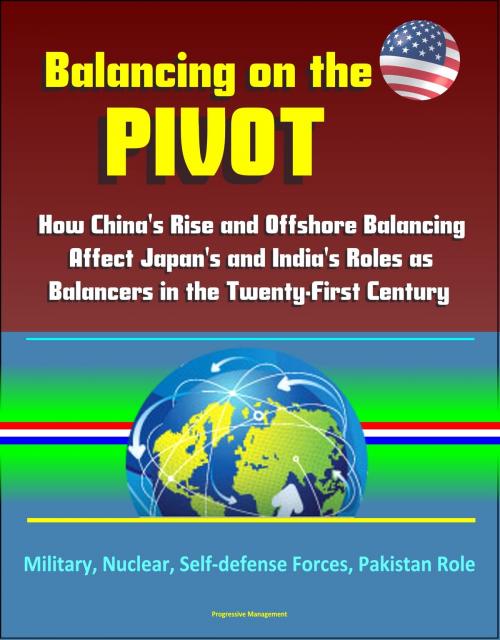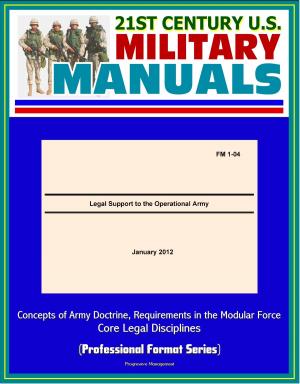Balancing on the Pivot: How China's Rise and Offshore Balancing Affect Japan's and India's Roles as Balancers in the Twenty-First Century - Military, Nuclear, Self-defense Forces, Pakistan Role
Nonfiction, History, Asian, China, Military, Strategy| Author: | Progressive Management | ISBN: | 9781370489169 |
| Publisher: | Progressive Management | Publication: | September 1, 2016 |
| Imprint: | Smashwords Edition | Language: | English |
| Author: | Progressive Management |
| ISBN: | 9781370489169 |
| Publisher: | Progressive Management |
| Publication: | September 1, 2016 |
| Imprint: | Smashwords Edition |
| Language: | English |
This excellent report has been professionally converted for accurate flowing-text e-book format reproduction. The United States has used primacy as its grand strategy for some time now. While this strategy has ensured US hegemony, it has also fiscally drained American power and left the United States with a poor global standing. As such, the United States should rethink its grand strategy in order to maintain its relative position in the twenty-first century. The United States is poised to pivot eastward to meet the demands of China as a rising challenger. The question I raise here is, how viable would an alternative grand strategy in Asia be? There is considerable enthusiasm in some corners of the policy-making world for the United States to return to a balancing strategy in Asia. Formerly known as offshore balancing, the strategy aims to conserve American power as it deals with the challenges of a rising China. One important, albeit overlooked, element of offshore balancing is, who plays the role of the balancer? This thesis seeks to answer that question.
Chapter 1 - Getting "Balance" Back into the Lexicon of Grand Strategy * Offshore Balancing * China's Patterns of Behavior * China's Military Capability * China's Economic Capacity * Background * Methodology * Statement of the Research Question and Its Significance * Chapter 2 - Pax Britannica: Historical Perspective of Offshore Balancing * Historical Background * Regional Patterns of Behavior * Global Patterns of Behavior * British Military Capabilities * British Economic Capacity * Chapter 3: Land of the Rising Sun: Adjusting the Asia Balance Using Japan * Background * Regional Patterns of Behavior * Japan and China * Japan and North Korea * Global Patterns of Behavior * Peacekeeping Operations * Japan's Lessons from the Gulf War * Japan and the United States * Japan as a Nuclear State? * Japanese Military Capability * Japan Maritime Self-Defense Force * Japan Air Self-Defense Force * Japan Ground Self-Defense Force * Japanese Economic Capacity * Chapter 4: A Nuclear Republic: Maintaining the Asia Balance Using India * Background * India's Regional Patterns of Behavior * India and Pakistan * India and the Indian Ocean * India's Global Patterns of Behavior * India and China * India and the United States * A Nuclear India * India's Military Capability * The Indian Army * The Indian Navy * The Indian Air Force * India's Economic Capacity * Chapter 5: The Balancer on the Pivot as a Way Forward * Background * Analytical Review of Case Studies * Pax Britannica * Japan * India * Implications * Policy Recommendation
This excellent report has been professionally converted for accurate flowing-text e-book format reproduction. The United States has used primacy as its grand strategy for some time now. While this strategy has ensured US hegemony, it has also fiscally drained American power and left the United States with a poor global standing. As such, the United States should rethink its grand strategy in order to maintain its relative position in the twenty-first century. The United States is poised to pivot eastward to meet the demands of China as a rising challenger. The question I raise here is, how viable would an alternative grand strategy in Asia be? There is considerable enthusiasm in some corners of the policy-making world for the United States to return to a balancing strategy in Asia. Formerly known as offshore balancing, the strategy aims to conserve American power as it deals with the challenges of a rising China. One important, albeit overlooked, element of offshore balancing is, who plays the role of the balancer? This thesis seeks to answer that question.
Chapter 1 - Getting "Balance" Back into the Lexicon of Grand Strategy * Offshore Balancing * China's Patterns of Behavior * China's Military Capability * China's Economic Capacity * Background * Methodology * Statement of the Research Question and Its Significance * Chapter 2 - Pax Britannica: Historical Perspective of Offshore Balancing * Historical Background * Regional Patterns of Behavior * Global Patterns of Behavior * British Military Capabilities * British Economic Capacity * Chapter 3: Land of the Rising Sun: Adjusting the Asia Balance Using Japan * Background * Regional Patterns of Behavior * Japan and China * Japan and North Korea * Global Patterns of Behavior * Peacekeeping Operations * Japan's Lessons from the Gulf War * Japan and the United States * Japan as a Nuclear State? * Japanese Military Capability * Japan Maritime Self-Defense Force * Japan Air Self-Defense Force * Japan Ground Self-Defense Force * Japanese Economic Capacity * Chapter 4: A Nuclear Republic: Maintaining the Asia Balance Using India * Background * India's Regional Patterns of Behavior * India and Pakistan * India and the Indian Ocean * India's Global Patterns of Behavior * India and China * India and the United States * A Nuclear India * India's Military Capability * The Indian Army * The Indian Navy * The Indian Air Force * India's Economic Capacity * Chapter 5: The Balancer on the Pivot as a Way Forward * Background * Analytical Review of Case Studies * Pax Britannica * Japan * India * Implications * Policy Recommendation















